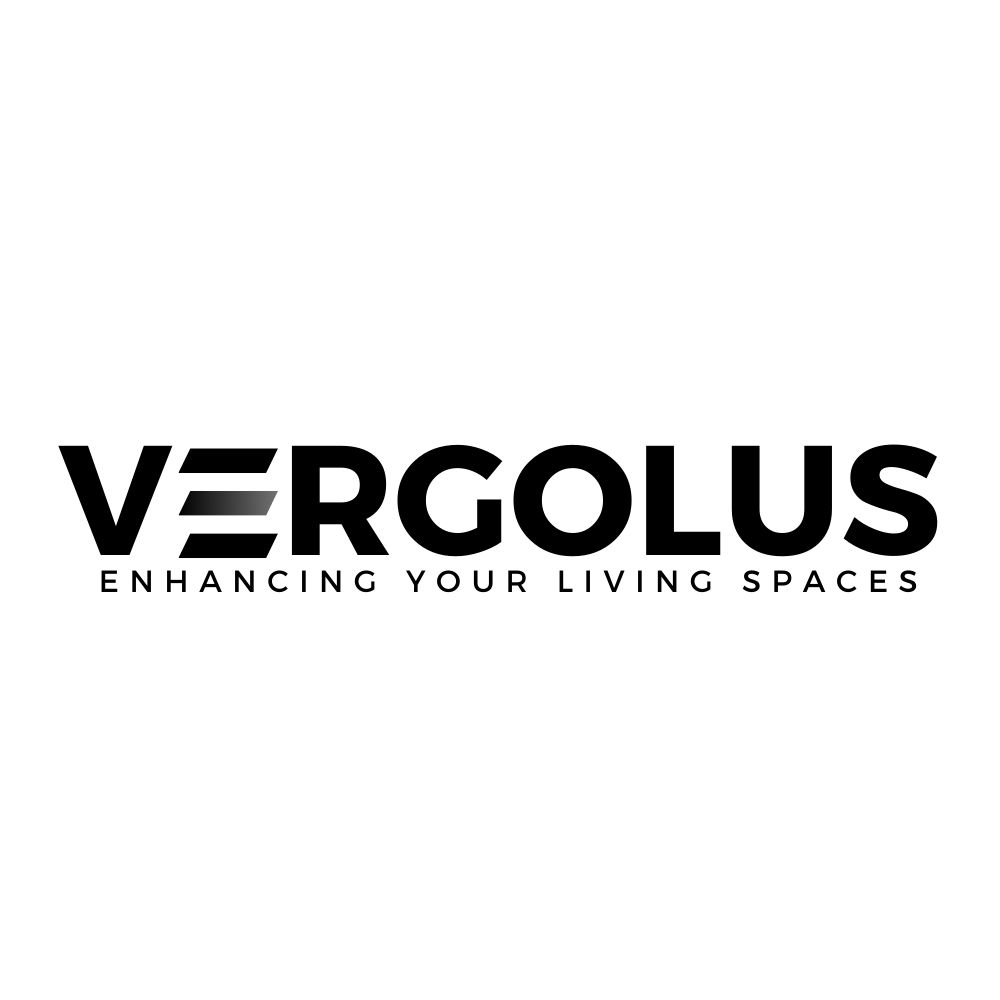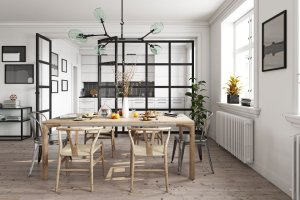In the world of modern interior design, the interplay of materials and functionality takes centre stage. One key element that has gained significant attention recently, a trend that will continue in 2024 is, the use of steel look interior doors. Paired with internal screens, dividers, and partitions, these design elements not only enhance the aesthetic appeal of spaces but also contribute to efficient space management.
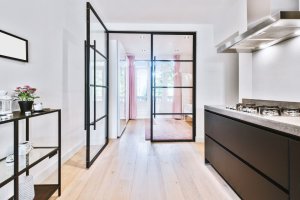
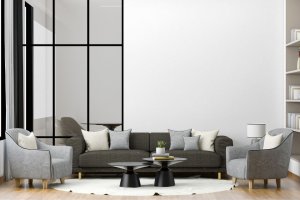
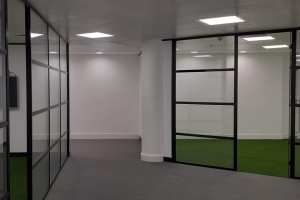
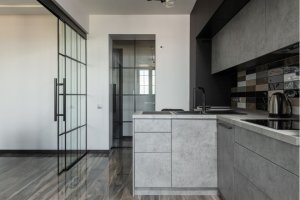
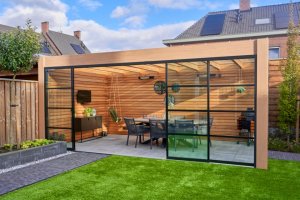
Content Overview:
Introduction A. Brief overview of steel look interior doors B. Importance of internal screens, dividers, and partitions in interior design Steel Look Interior Doors A. Characteristics and features 1. Material composition 2. Aesthetic appeal 3. Durability and strength B. Design options 1. Styles and finishes 2. Customisation possibilities C. Installation considerations 1. Hardware requirements 2. Professional installation vs. DIY options Internal Screens A. Definition and purpose B. Types of internal screens 1. Folding screens 2. Sliding screens 3. Fixed screens C. Materials used in internal screens 1. Glass 2. Wood 3. Metal Dividers and Partitions A. Importance in space management B. Types of dividers and partitions 1. Room dividers 2. Sliding partitions 3. Movable screens C. Design considerations 1. Open vs. closed designs 2. Integration with overall interior aesthetics Office Partitioning with Steel look internal doors, screens and windows A. Purpose of Use B. The contemporary look 1. Meeting rooms 2. Shared offices 3. Windows Integration in Interior Design A. Cohesive design principles 1. Consistency in materials 2. Matching with existing décor B. Functional considerations 1. Privacy and light control 2. Flexibility in space usage Maintenance and Care A. Cleaning and upkeep of steel look interior doors B. Maintenance tips for internal screens, dividers, and partitions Case Studies A. Examples of successful interior designs using steel look doors and internal screens B. Lessons learned from real-world applications Future Trends A. Emerging trends in interior door design B. Innovations in internal screens, dividers, and partitions In A Nutshell A. Summary of key points B. Final thoughts on the impact of steel look interior doors and internal screens in modern interior design.Introduction
In the ever-evolving world of interior design, where aesthetics seamlessly merge with functionality, two key elements have garnered significant attention: steel look interior doors and the strategic use of internal screens, dividers, and partitions. This introduction provides a glimpse into the fascinating realm of these design elements, exploring both the distinct charm of steel look doors and the pivotal role played by internal screens in shaping the ambiance of interior spaces.A. Brief Overview of Steel Look Interior Doors
At the heart of contemporary interior design lies the allure of steel look interior doors. These doors, crafted to mimic the industrial aesthetic of steel, bring a touch of sophistication and strength to living spaces. The material composition of these doors, often a fusion of robust materials, not only ensures durability but also adds a modern edge to the overall design. From sleek, minimalist profiles to intricate designs, steel look doors offer a diverse range of styles and finishes, making them a versatile choice for various interior themes. This section will delve into the defining characteristics and features that make steel look interior doors a sought-after element in the world of design.B. Importance of Internal Screens, Dividers, and Partitions in Interior Design
Beyond the elegance of individual elements, the importance of internal screens, dividers, and partitions in interior design cannot be overstated. These components play a pivotal role in spatial organisation, offering a delicate balance between openness and privacy. Internal screens serve as aesthetic enhancers, providing visual interest and breaking up monotonous expanses. Dividers and partitions, on the other hand, are key tools in space management, allowing for the creation of distinct zones within a larger area. This section will elaborate on the functional significance of these elements and their impact on shaping inviting, well-organised interiors.Steel Look Interior Doors
Steel look interior doors stand as a testament to the seamless integration of industrial aesthetics with the demands of contemporary living. This section explores the defining characteristics, design options, and installation considerations that make these doors a compelling choice in modern interior design.A. Characteristics and Features
1. Material Composition
At the core of steel look interior doors is a carefully curated material composition. Typically, these doors incorporate a blend of materials that mimic the appearance of steel while offering practical benefits. From composite materials to metal alloys, the choice of components ensures a balance between authenticity and functionality.2. Aesthetic Appeal
The aesthetic allure of steel look interior doors lies in their ability to evoke an industrial, yet sophisticated, charm. The clean lines, bold profiles, and often minimalistic design elements contribute to a contemporary aesthetic that seamlessly integrates with various interior styles. This section explores how the visual appeal of these doors becomes a focal point in interior design.3. Durability and Strength
Beyond their visual impact, steel look doors are priced for their durability and strength. The material composition not only contributes to a robust structure but also ensures longevity in high-traffic areas. Understanding the durability and strength of these doors is essential for homeowners seeking a balance between style and functionality.
B. Design Options
1. Styles and Finishes
Diversity reigns supreme in the world of steel look interior doors when it comes to styles and finishes. Whether opting for a sleek, monochromatic design or a more intricate pattern, homeowners have a plethora of options to choose from. This section delves into the various styles and finishes available, highlighting the versatility that steel look doors bring to interior spaces.2. Customisation Possibilities
Recognising the desire for personalisation, manufacturers offer extensive customisation possibilities for steel look doors. From choosing specific finishes to incorporating unique design elements, homeowners can tailor these doors to align with their individual tastes and the overall aesthetic of their homes. This portion explores the freedom and flexibility that customisation affords.C. Installation Considerations
1. Hardware Requirements
The successful integration of steel look interior doors hinges on understanding the essential hardware requirements. From hinges to handles, each component plays a crucial role in ensuring proper functionality and visual coherence. This section provides insights into the hardware considerations that accompany the installation of these doors.2. Professional Installation vs. DIY Options
Choosing between professional installation and a do-it-yourself approach is a pivotal decision in the journey of incorporating steel look interior doors. Factors such as precision, expertise, and the complexity of the installation process come into play. This part of the discussion weighs the pros and cons of both options, empowering homeowners to make informed decisions based on their skill level and preferences.Internal Screens
Internal screens, often considered the unsung heroes of interior design, bring a touch of elegance and functionality to living spaces. This section explores the definition, purpose, types, and materials associated with these versatile design elements.
A. Definition and Purpose
Definition
Internal screens, in the context of interior design, are decorative or functional partitions that serve to define and separate spaces within a larger area. Their primary purpose is to strike a balance between open layouts and private zones, providing visual interest while maintaining a cohesive design.Purpose
The purpose of internal screens extends beyond mere segmentation of space. These screens contribute to the overall aesthetic by introducing texture, patterns, and a layering effect. They act as visual focal points, adding character to interiors while addressing practical considerations like privacy and light diffusion.B. Types of Internal Screens
1. Folding Screens
Folding screens, also known as room dividers, are hinged panels that can be folded in various configurations. They offer flexibility in adjusting the spatial layout, making them suitable for dynamic living environments. This section explores the versatility of folding screens in shaping different zones within a space.2. Sliding Screens
Sliding screens operate on a track system, allowing for smooth lateral movement. This type is ideal for spaces where a seamless transition between areas is desired. Whether concealing or revealing sections of a room, sliding screens provide a modern and practical solution.3. Fixed Screens
Fixed screens are stationary elements that serve a more permanent role in defining spaces. They are often used for decorative purposes, contributing to the overall design theme of a room. This portion delves into the stability and design possibilities offered by fixed screens.C. Materials Used in Internal Screens
1. Glass
Glass internal screens impart a sense of openness and transparency to a space. They allow natural light to flow through while visually connecting different areas. This section explores the aesthetic and practical considerations associated with glass screens.2. Wood
Wooden internal screens bring warmth and a touch of nature to interiors. With various wood types and finishes available, these screens can cater to both traditional and contemporary design preferences. The exploration delves into the timeless appeal and design versatility of wood.3. Metal
Metal internal screens offer a modern and industrial aesthetic. From intricate metalwork to minimalist designs, the use of metals such as iron or aluminium provides durability and a sleek visual impact. This part discusses the unique characteristics and applications of metal screens in interior design. Internal screens, with their diverse types and materials, contribute to the artful choreography of space within a home. The selection of a particular type and material hinges on the desired aesthetic, functional requirements, and the overall design vision.Dividers and Partitions
Dividers and partitions play a crucial role in the symphony of interior design, orchestrating spatial organisation and aesthetic harmony within living spaces. This section explains the significance of these elements, the diverse types available, and key design considerations for their integration.A. Importance in Space Management
The importance of dividers and partitions in space management cannot be overstated. These elements act as sculptors of spatial layouts, allowing for the creation of distinct zones within larger areas. They serve both practical and aesthetic purposes, facilitating efficient use of space while contributing to the overall design cohesion.B. Types of Dividers and Partitions
1. Room Dividers
Room dividers are versatile elements that delineate distinct areas within a larger space. Whether employed for visual separation or functional purposes, such as creating a home office within a living room, room dividers offer flexibility. This section explores the varied styles and designs of room dividers.2. Sliding Partitions
Sliding partitions, operating on a horizontal track system, provide a dynamic solution for spaces that require periodic transformation. These partitions offer the adaptability to open up or close off sections of a room seamlessly. The discussion here delves into the practical applications and design possibilities of sliding partitions.3. Movable Screens
Movable screens, similar to folding screens, offer a portable and flexible approach to space management. They can be repositioned according to changing needs, making them ideal for dynamic living environments. This part explores the mobility and versatility of movable screens.C. Design Considerations
1. Open vs. Closed Designs
The decision between open and closed designs for dividers and partitions is pivotal in shaping the ambiance of a space. Open designs foster a sense of continuity and spaciousness, while closed designs provide privacy and distinct visual separation. This section navigates the considerations associated with choosing between open and closed designs.2. Integration with Overall Interior Aesthetics
Successful integration of dividers and partitions requires a thoughtful approach to align them with the overall interior aesthetics. The design should complement the existing décor, contributing to a cohesive and harmonious visual narrative. This portion explores strategies for seamless integration and the impact of design choices on the overall atmosphere. Dividers and partitions, with their diverse types and design considerations, empower homeowners and designers to craft spaces that are both functional and aesthetically pleasing. By understanding the importance of these elements in space management and embracing thoughtful design principles, one can achieve a harmonious balance between form and function within the home.Office Partitioning with Steel Look Internal Doors, Screens, and Windows
In modern office design, the strategic use of steel look internal doors, screens, and windows plays a pivotal role in creating functional, aesthetically pleasing, and adaptable workspaces. Let’s explore the purpose of their use and the contemporary look they bring to meeting rooms, shared offices, and windows.
A. Purpose of Use
The incorporation of steel look internal elements in office partitioning serves several essential purposes, enhancing both the functionality and ambiance of the workspace.1. Spatial Organisation and Privacy
- Purpose: Steel look internal doors and screens are instrumental in defining and organizing office spaces. Meeting rooms and private offices can benefit from these elements to provide visual and acoustic privacy, fostering a conducive environment for focused work and confidential discussions.
2. Flexibility and Adaptability
- Purpose: The flexibility of steel look partitions allows for the creation of adaptable office layouts. Shared offices and collaborative areas can be easily configured or reconfigured to accommodate changing team dynamics, fostering a dynamic and collaborative work environment.
3. Aesthetic Enhancement
- Purpose: Beyond functionality, steel look internal elements contribute to the overall aesthetic enhancement of office interiors. These design elements add a touch of sophistication and modernity, aligning with contemporary office design trends and creating visually appealing workspaces.
B. The Contemporary Look
The use of steel look internal doors, screens, and windows imparts a contemporary aesthetic to office partitioning, bringing a sense of style and modernity to the workspace.1. Meeting Rooms
- Contemporary Look: Steel look internal doors for meeting rooms often feature sleek profiles, minimalist designs, and perhaps glass inserts. The combination of steel and glass creates a contemporary and professional appearance, allowing natural light to permeate while maintaining a sense of privacy.
2. Shared Offices
- Contemporary Look: In shared office spaces, the use of steel look internal screens provides a visually open yet defined environment. Sliding or folding screens with steel frames offer a contemporary and industrial touch, allowing for flexibility in space utilisation without compromising on aesthetics.
3. Windows
- Contemporary Look: Steel look windows contribute to the contemporary aesthetic by embracing the industrial design trend. Thin sightlines and sleek profiles create a modern and uncluttered appearance, while the durability of steel ensures a long-lasting and low-maintenance solution.
Integration in Interior Design with Steel Look Interior Doors
The seamless integration of design elements is a cornerstone of successful interior design. This section explores the importance of cohesive design principles and functional considerations for achieving harmony within a living space.
A. Cohesive Design Principles
1. Consistency in Materials
Consistency in materials is a fundamental principle in cohesive interior design. This involves selecting materials that complement each other, creating a harmonious visual palette. In the context of dividers, partitions, and steel look doors, maintaining consistency in materials ensures that these elements contribute cohesively to the overall aesthetic. This section delves into the significance of material consistency and its impact on the visual unity of a space.2. Matching with Existing Décor
The art of integration extends to matching new design elements with the existing décor. Whether incorporating steel look doors or internal screens, these additions should seamlessly blend with the established style of the space. This portion explores strategies for ensuring that new elements enhance, rather than disrupt, the overall design narrative.B. Functional Considerations
1. Privacy and Light Control
Functional considerations are paramount in creating spaces that cater to the practical needs of inhabitants. Privacy and light control are particularly crucial when integrating dividers, partitions, and doors. This section delves into how these elements can be strategically employed to enhance privacy and control the flow of natural light within a space.2. Flexibility in Space Usage
The flexibility of space usage is a key consideration in modern living environments. Dividers and partitions, when integrated thoughtfully, provide the adaptability needed to transform spaces according to varying needs. Whether creating an open layout for social gatherings or sectioning off private areas for focused work, this part explores how these elements contribute to versatile space utilisation. The successful integration of dividers, partitions, and steel look doors into an interior design scheme relies on a delicate balance between aesthetic coherence and functional efficacy. By adhering to cohesive design principles and addressing practical considerations, homeowners and designers can create spaces that not only look stunning but also enhance the functionality and flexibility of the home.Maintenance and Care of Steel Look Interior Doors
Ensuring the longevity and pristine condition of interior design elements is crucial for sustaining the appeal and functionality of a space. This section delves into the maintenance and care practices specific to steel look interior doors, as well as providing essential tips for preserving the condition of internal screens, dividers, and partitions.A. Cleaning and Upkeep
Cleaning Practices
Steel look interior doors, while robust, benefit from regular cleaning to maintain their aesthetic appeal. Follow these cleaning practices:- Dusting: Regular dusting with a soft, lint-free cloth keeps the surface free from particles that can dull the finish.
- Mild Detergent Cleaning: For more stubborn dirt, a mild detergent solution and a soft cloth can be used. Avoid abrasive cleaners to prevent damage to the finish.
- Avoid Harsh Chemicals: Steer clear of harsh chemicals, as they can erode the protective coating on the steel look doors. Opt for gentle cleaning agents to preserve their integrity.
Upkeep Tips
Maintaining steel look interior doors goes beyond cleaning. Consider the following upkeep tips:- Inspect Hardware Regularly: Ensure that hinges, handles, and other hardware components are tightened and functioning correctly. Lubricate moving parts if necessary.
- Address Scratches Promptly: In the event of scratches or dings, address them promptly by using touch-up paint or a recommended restoration method to prevent further damage.
- Protect Against Harsh Elements: If the doors lead to outdoor spaces, consider using weather-resistant treatments to protect them from harsh elements.
B. Maintenance Tips for Internal Screens, Dividers, and Partitions
General Maintenance Practices
Internal screens, dividers, and partitions contribute to the overall aesthetic and functionality of a space. Here are maintenance tips for these elements:- Regular Cleaning: Dust and clean screens, dividers, and partitions regularly to prevent the accumulation of dirt and grime.
- Material-Specific Care: Understand the materials used in these elements (glass, wood, metal) and apply care practices accordingly. For example, use appropriate wood polish for wooden dividers and partitions.
- Inspect Moving Parts: If applicable, inspect moving parts such as tracks and hinges to ensure smooth operation. Clean and lubricate these components as needed.
Addressing Specific Materials
For Glass Screens:
- Streak-Free Cleaning: Use a glass cleaner or a mixture of vinegar and water for streak-free cleaning.
- Avoid Abrasive Cleaners: Refrain from using abrasive cleaners or rough materials that may scratch the glass surface.
For Wood Dividers and Partitions:
- Wood-Specific Products: Use wood-specific cleaning and polishing products to maintain the natural beauty of the material.
- Protect Against Moisture: Avoid excessive moisture exposure to prevent warping or damage to wooden surfaces.
For Metal Screens:
- Corrosion Prevention: Apply appropriate metal protectants to prevent corrosion, especially in environments with high humidity.
- Polishing: Periodically polish metal surfaces to maintain their shine and prevent dullness.
Case Studies: Steel Look Interior Doors
Exploring real-world applications of steel look doors and internal screens provides valuable insights into their successful integration within diverse interior designs. This section presents examples of noteworthy interior designs, highlighting lessons learned from these case studies.A. Examples of Successful Interior Designs Using Steel Look Doors and Internal Screens
1. Industrial Chic Residence
- Design Elements: Steel look interior doors with a matte black finish were seamlessly integrated into an industrial chic residence. Folding internal screens crafted from metal and glass were strategically placed to separate the living and dining areas without compromising the open feel.
- Key Takeaways: The consistent use of steel elements, both in doors and screens, created a cohesive industrial aesthetic. The combination of glass in screens maintained a sense of spaciousness while providing visual separation.
2. Modern Minimalist Office
- Design Elements: Steel look doors were employed in a modern minimalist office to create a sleek and sophisticated entrance. Sliding partitions with frosted glass panels were utilised to section off meeting areas while allowing light to permeate the space.
- Key Takeaways: The minimalistic design of steel doors contributed to the overall contemporary vibe. Frosted glass in the partitions added an element of privacy without sacrificing the open office concept.
3. Transitional Living Room
- Design Elements: In a transitional living room, wooden internal screens were introduced to define a cosy reading nook without enclosing the space entirely. Steel look French doors with glass panels allowed for a seamless transition to the adjacent garden.
- Key Takeaways: The use of wood in screens added warmth and a touch of traditional charm to the transitional setting. Steel look doors with glass maintained a connection to the outdoors while providing flexibility in usage.
B. Lessons Learned from Real-World Applications
1. Balance of Materials is Key
- Lesson: The successful integration of steel look doors and internal screens often hinges on achieving a balance of materials. Combining steel with glass, wood, or other elements adds depth and visual interest to the design.
2. Consideration of Privacy and Openness
- Lesson: Real-world applications emphasise the importance of thoughtful consideration regarding privacy and openness. The strategic placement of screens, dividers, and doors can create defined areas while preserving an overall sense of openness.
3. Adaptability for Various Interior Styles
- Lesson: Steel look doors and internal screens showcase remarkable adaptability across various interior styles. From industrial and modern to transitional settings, these elements can be customised to enhance diverse design aesthetics.
4. Seamless Integration with Existing Décor
- Lesson: The integration of steel look doors and screens should seamlessly align with existing décor. Consistency in design language ensures that new elements enhance the overall aesthetic rather than detracting from it.
5. Functional Efficacy and Flexibility
- Lesson: The practical considerations of these design elements, such as providing privacy, controlling light, and offering flexibility in space usage, are critical factors that influence their successful application.
Future Trends for Steel Look Interior Doors
As interior design continues to evolve, steel look interior doors remain at the forefront of contemporary aesthetics. This section explores the emerging trends in interior door design, specifically focusing on steel look doors, and highlights innovations in internal screens, dividers, and partitions.
A. Emerging Trends in Interior Door Design
1. Integration of Smart Technologies
- Trend: Smart technology is permeating all aspects of the home, and interior doors are no exception. Emerging trends include the integration of sensors, touchless access controls, and even smart glass technology, allowing for privacy control and dynamic aesthetics.
2. Artisanal and Handcrafted Designs
- Trend: While technology advances, there’s a counter-trend towards artisanal and handcrafted design. Steel look interior doors featuring intricate craftsmanship, unique textures, and personalized detailing are anticipated to gain popularity, adding a touch of individuality to modern spaces.
3. Minimalistic Profiles with Hidden Hardware
- Trend: Aesthetic simplicity is forecasted to be a dominant trend in steel look interior doors. Minimalistic profiles, concealed hinges, and hidden hardware create a sleek and uncluttered appearance, aligning with the desire for clean and modern design.
4. Incorporation of Sustainable Materials
- Trend: Sustainability continues to be a driving force in design. Future trends for steel look doors involve the increased use of sustainable materials, such as recycled steel or eco-friendly finishes, aligning with the broader movement toward environmentally conscious living.
B. Innovations in Steel Look Interior Doors, Internal Screens, Dividers, and Partitions
1. Kinetic and Transformative Partitions
- Innovation: The future of internal screens and partitions lies in kinetic designs that allow for transformative spatial configurations. Motorised partitions that can shift, fold, or expand offer unparalleled flexibility in adapting spaces to changing needs.
2. Biophilic Design Integration
- Innovation: Internal screens and dividers are anticipated to embrace biophilic design principles. Incorporating natural elements, such as organic patterns, greenery, or materials that mimic natural textures, will create environments that foster a deeper connection with nature.
3. Multi-Functional Screens with Built-In Features
- Innovation: Internal screens and partitions are evolving into multi-functional elements with built-in features. This could include integrated storage, lighting, or even interactive displays, transforming these design elements into practical and versatile components of interior spaces.
4. Customisable Digital Art Displays
- Innovation: Digital technology is making its way into internal screens, offering customisable digital art displays. Homeowners can change the visual appearance of screens at will, creating dynamic and ever-changing focal points within their living spaces.
5. Invisible Soundproofing Technology
- Innovation: Soundproofing innovations are becoming more discreet and effective. Internal screens and partitions with invisible soundproofing technology offer privacy without compromising the visual openness of a space, making them ideal for both residential and commercial settings.
In A Nutshell: Steel Look Interior Doors
As we conclude our exploration of steel look interior doors and internal screens in the context of modern interior design, it’s evident that these elements are not merely functional components but transformative pieces that elevate the aesthetics and functionality of living spaces. Let’s summarise the key points and reflect on the impactful role they play in contemporary design.A. Summary of Key Points
Steel Look Interior Doors
- Material Brilliance: Steel look interior doors boast a material composition that combines strength with a sleek aesthetic, offering a modern industrial appeal.
- Versatility in Design: The variety of styles and finishes, coupled with customisation options, allows for seamless integration into diverse interior themes.
- Durability and Endurance: Beyond their visual appeal, steel look doors are lauded for their durability and capacity to withstand high-traffic environments.
- Installation Considerations: The successful integration of these doors involves understanding hardware requirements and making informed choices between professional installation and DIY options.
Internal Screens, Dividers, and Partitions
- Spatial Organisation: Internal screens, dividers, and partitions serve as artistic tools for spatial organisation, balancing openness with privacy in interior design.
- Material Diversity: Glass, wood, and metal are key materials, each offering unique aesthetics and functional characteristics for creating defined spaces.
- Design Flexibility: From folding screens to sliding partitions, the design flexibility of these elements caters to the evolving needs of modern living.
- Integration Considerations: Successful integration involves maintaining cohesive design principles and addressing both aesthetic and functional aspects.

